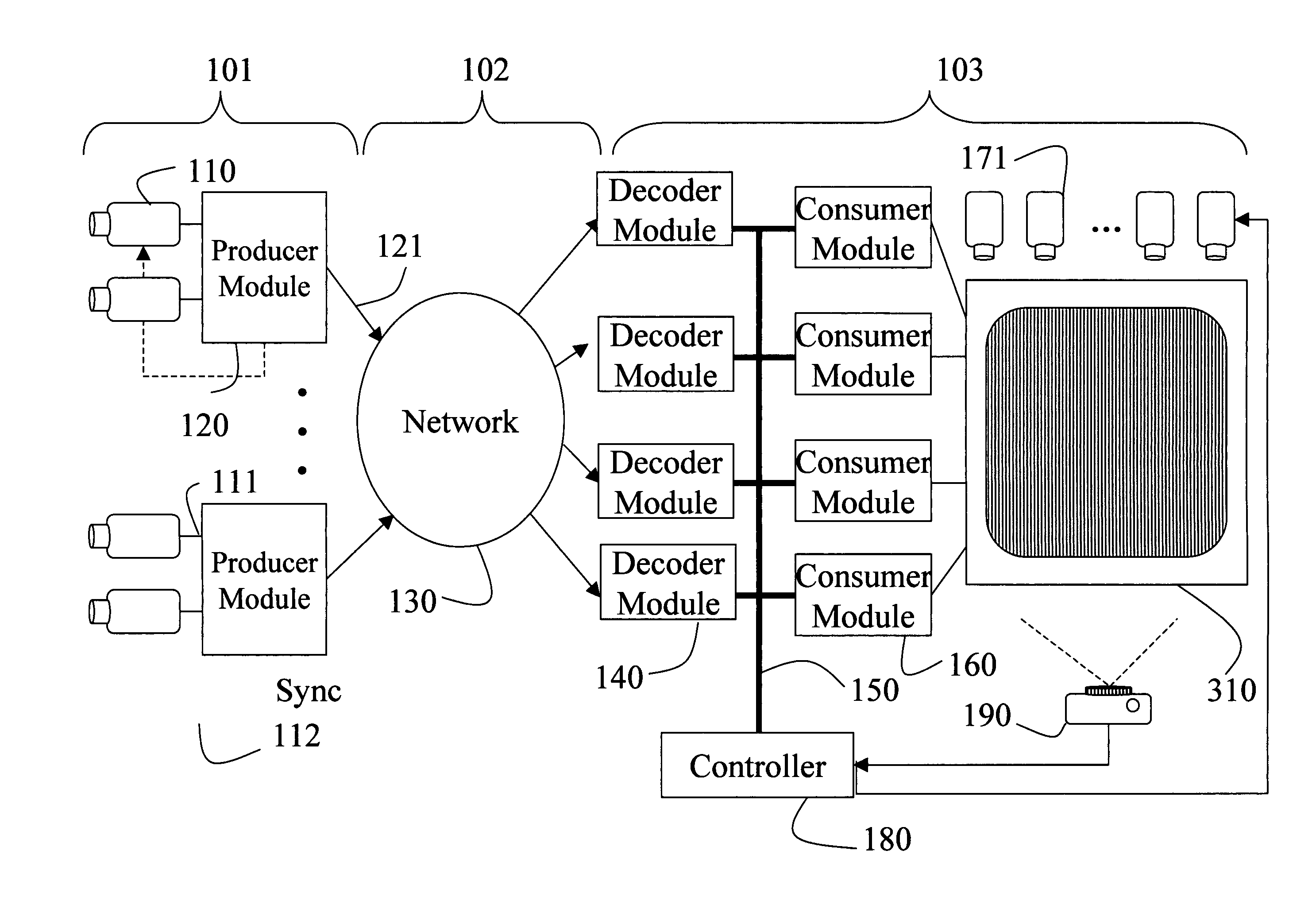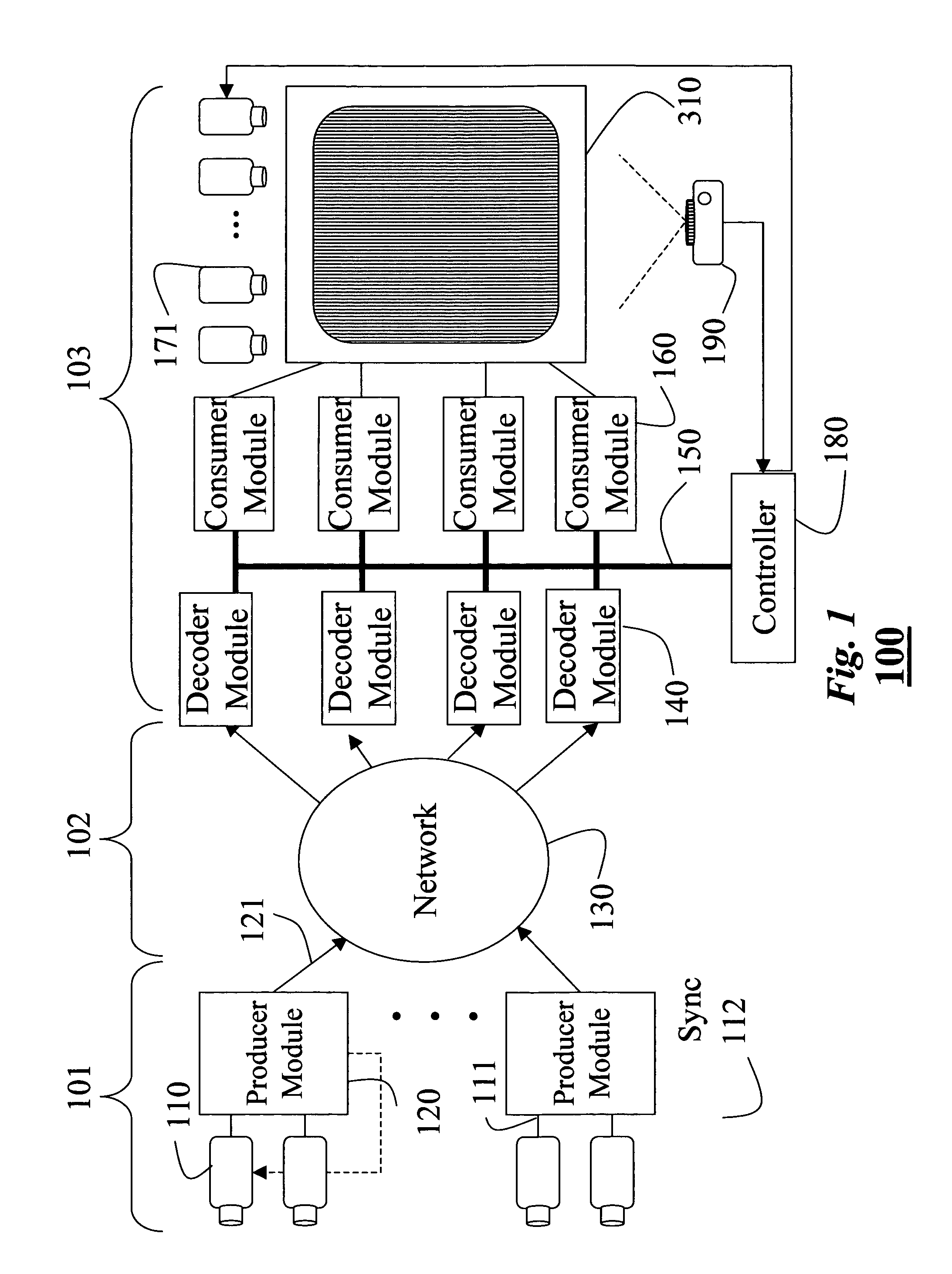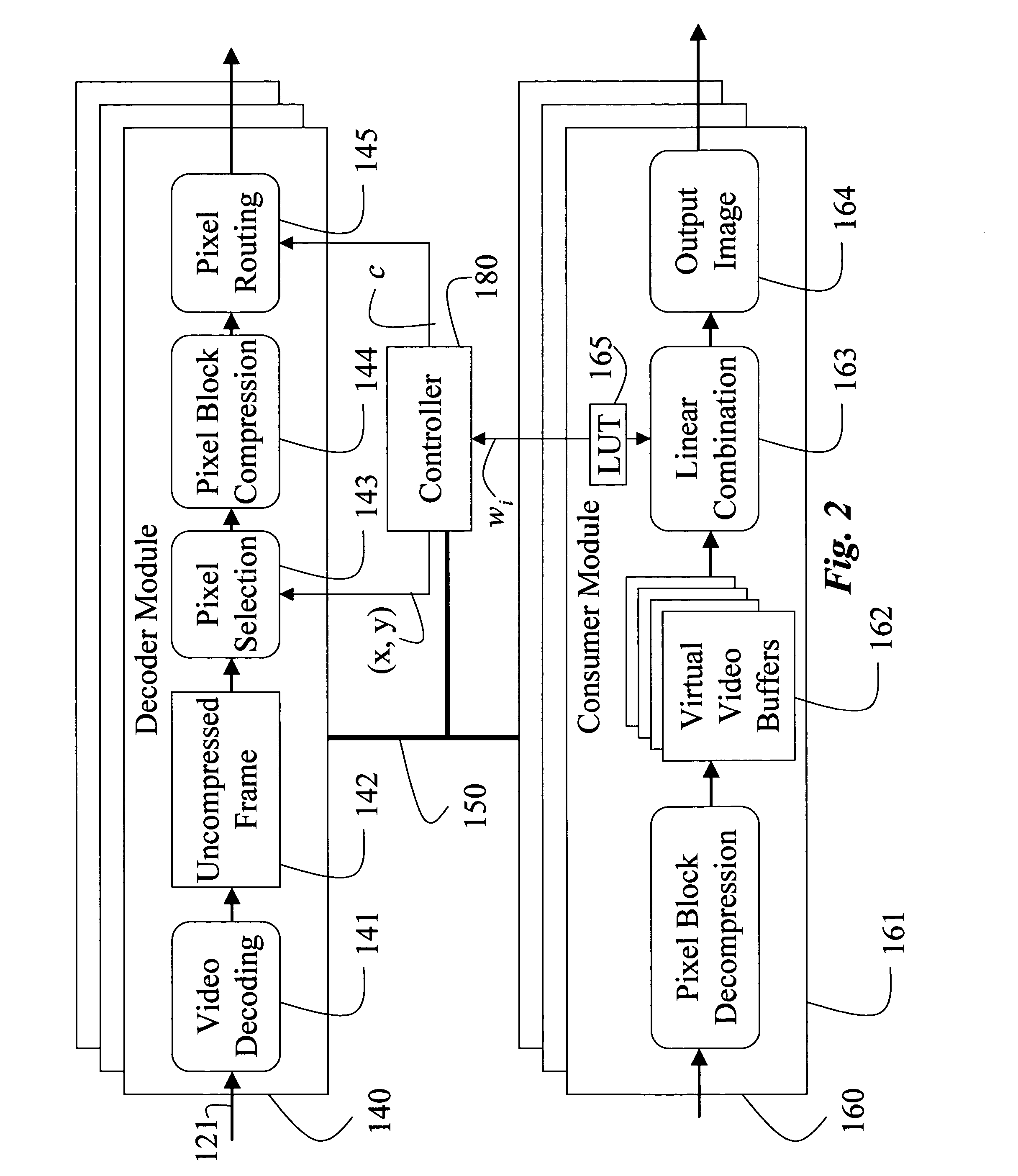3D television system and method
a 3d tv and system technology, applied in the field of image processing, can solve the problems of not fully functional end-to-end 3d tv system implementation, inability to acquire dynamic lightfields only recently, and inherently require high resolution of imaging medium, etc., to achieve high resolution, high scalability, and high resolution. , the effect of high resolution
- Summary
- Abstract
- Description
- Claims
- Application Information
AI Technical Summary
Benefits of technology
Problems solved by technology
Method used
Image
Examples
Embodiment Construction
[0065] System Architecture
[0066]FIG. 1 shows a 3D TV system according to our invention. The system 100 includes an acquisition stage 101, a transmission stage 102, and a display stage 103.
[0067] The acquisition stage 101 includes of an array of synchronized video cameras 110. Small clusters of cameras are connected to producer modules 120. The producer modules capture real-time, uncompressed videos and encode the videos using standard MPEG coding to produce compressed video streams 121. The producer modules also generate viewing parameters.
[0068] The compressed video streams are sent over a transmission network 130, which could be broadcast, cable, satellite TV, or the Internet.
[0069] In the display stage 103, the individual video streams are decompressed by decoder modules 140. The decoder modules are connected by a high-speed network 150, e.g., gigabit Ethernet, to a cluster of consumer modules 160. The consumer modules render the appropriate views and send output images to a ...
PUM
 Login to View More
Login to View More Abstract
Description
Claims
Application Information
 Login to View More
Login to View More - R&D
- Intellectual Property
- Life Sciences
- Materials
- Tech Scout
- Unparalleled Data Quality
- Higher Quality Content
- 60% Fewer Hallucinations
Browse by: Latest US Patents, China's latest patents, Technical Efficacy Thesaurus, Application Domain, Technology Topic, Popular Technical Reports.
© 2025 PatSnap. All rights reserved.Legal|Privacy policy|Modern Slavery Act Transparency Statement|Sitemap|About US| Contact US: help@patsnap.com



